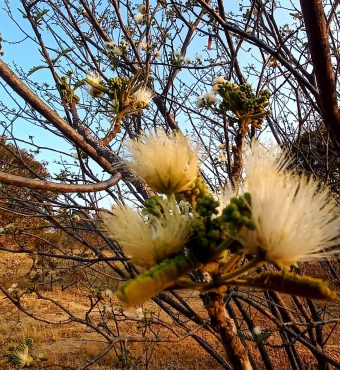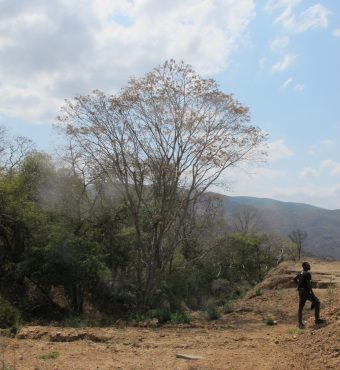


Botanical Name: Albizia amara (Roxb.) Biovin
Synonym: Albizia sericocephala Benth.
Common Name: Fine-leaved Albizia
Plant Family: Mimosoideae
Origin: Africa
References: Coates Palgrave p. 257, Storrs p. 205-206. S.A. No. 149, Zimb. No. 173
Description: A shapely, spreading, deciduous tree with grey-brown, fissured bark. Large, bipinnate leaves (8-20cm), with 40 to 45 pairs of small (4mm) pale green leaflets, giving a feathery appearance. Flower a sweet-smelling white ball appearing with new leaves. The fruit is a stout, woody, straight, yellow-brown pod (up to 15cm), with distinct valves. The pod is largely indehiscent.
Features of Particular Interest: Flat-topped tree shape and flowers.
Height and Spread: 8m – 12m high, 4m – 8m spread.
Periods of Interest:
Leaf: September to May.
Flowering: August to October.
Fruiting: November to June.
Bark: All year round.
Cultivation
Soil and Moisture: A. amara occurs in a variety of soils. Plant in full sun or semi shade and water regularly. It is drought resistant.
Aspect: Enjoys an open aspect.
Hardiness: Apparently tolerant of dry and sunny conditions once established.
Maintenance and Pruning: None required.
Propagation: A. amara is relatively easy to germinate. The seed should be planted with a light sand/soil cover and watered regularly. Transplant into larger bags when several leaf have appeared.
Problems and Drawbacks: Roots not known to be intrusive, but it will lose its leaves in winter, so do not plant near swimming pools.
Use and Associated Planting: Spreading canopy makes a good specimen tree in large garden or shade tree on farm.
